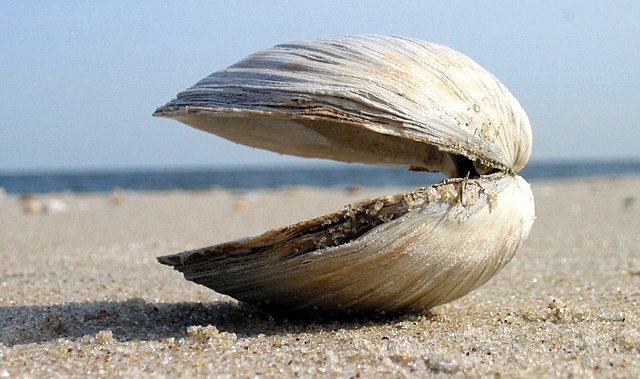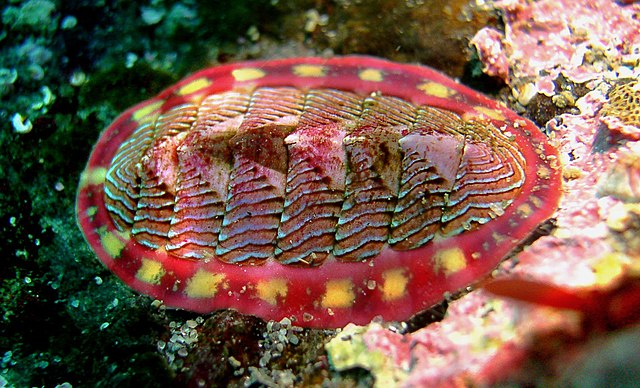A pearl is a hard, glistening object produced within the soft tissue of a living shelled mollusk or another animal, such as fossil conulariids. Just like the shell of a mollusk, a pearl is composed of calcium carbonate in minute crystalline form, which has deposited in concentric layers. The ideal pearl is perfectly round and smooth, but many other shapes, known as baroque pearls, can occur. The finest quality of natural pearls have been highly valued as gemstones and objects of beauty for many centuries. Because of this, pearl has become a metaphor for something rare, fine, admirable and valuable.
Various pearls
Georgian seed pearl gold ring
A black pearl and a shell of the black-lipped pearl oyster. The iridescent colors originate from nacre layers.
Electron microscopy image of a fractured surface of nacre
Mollusca is the second-largest phylum of invertebrate animals, after Arthropoda; members are known as molluscs or mollusks. Around 76,000 extant species of molluscs are recognized. The number of fossil species is estimated between 60,000 and 100,000 additional species. The proportion of undescribed species is very high. Many taxa remain poorly studied.
Image: Grapevinesnail 01a
Image: Octopus 2
Image: Clams on Sandy Hook beaches panoramio
Image: Tonicella lineata








